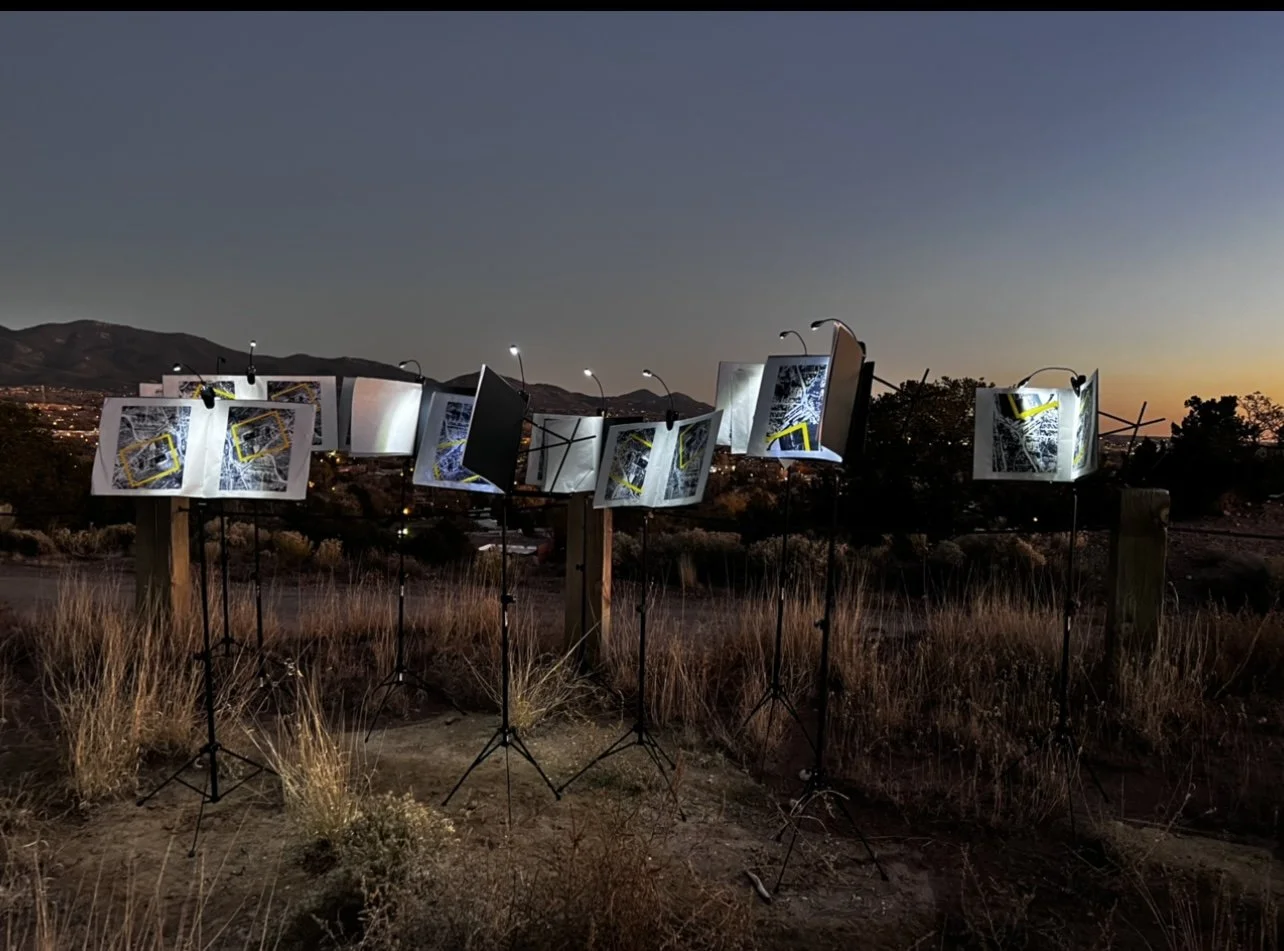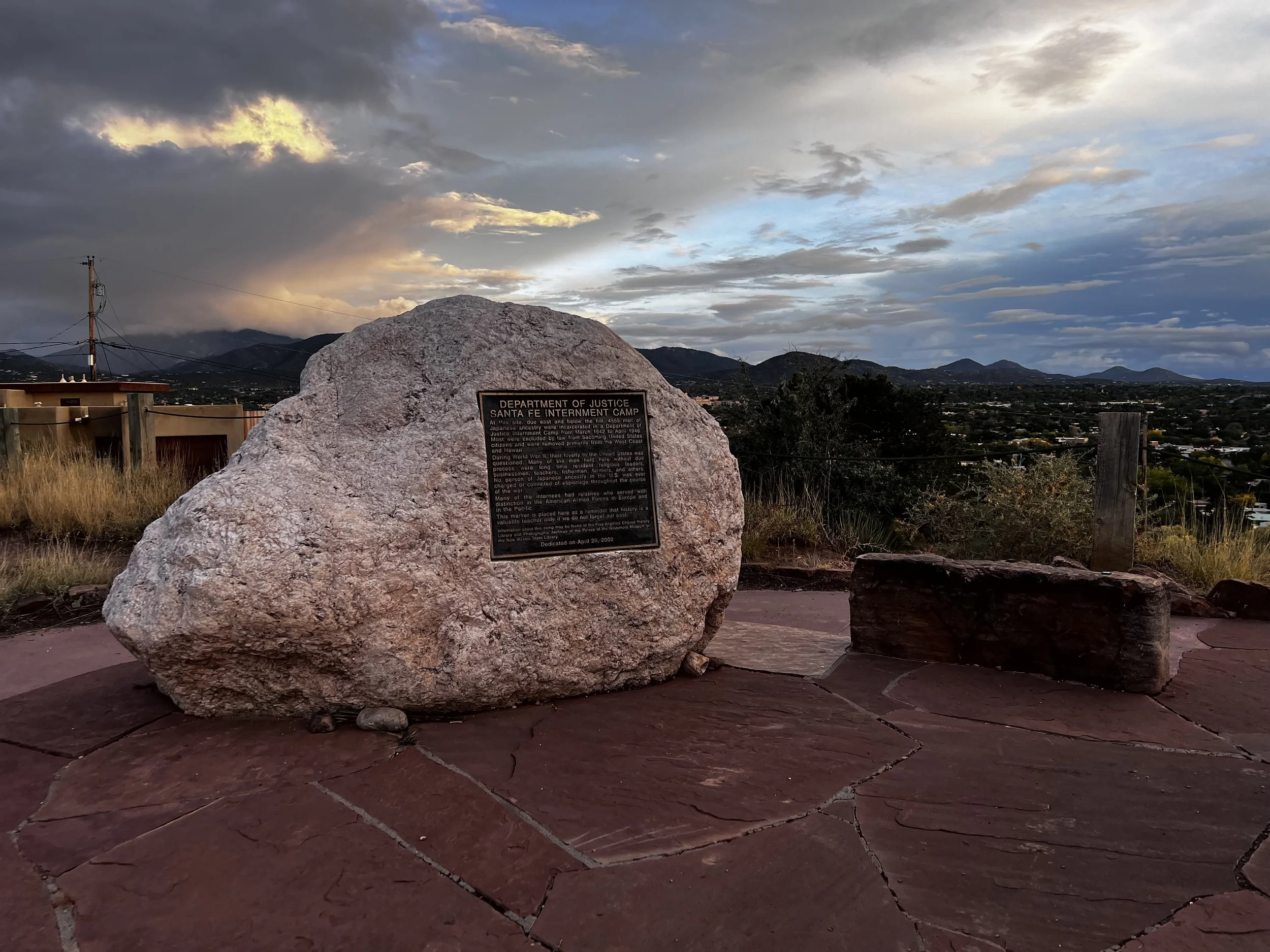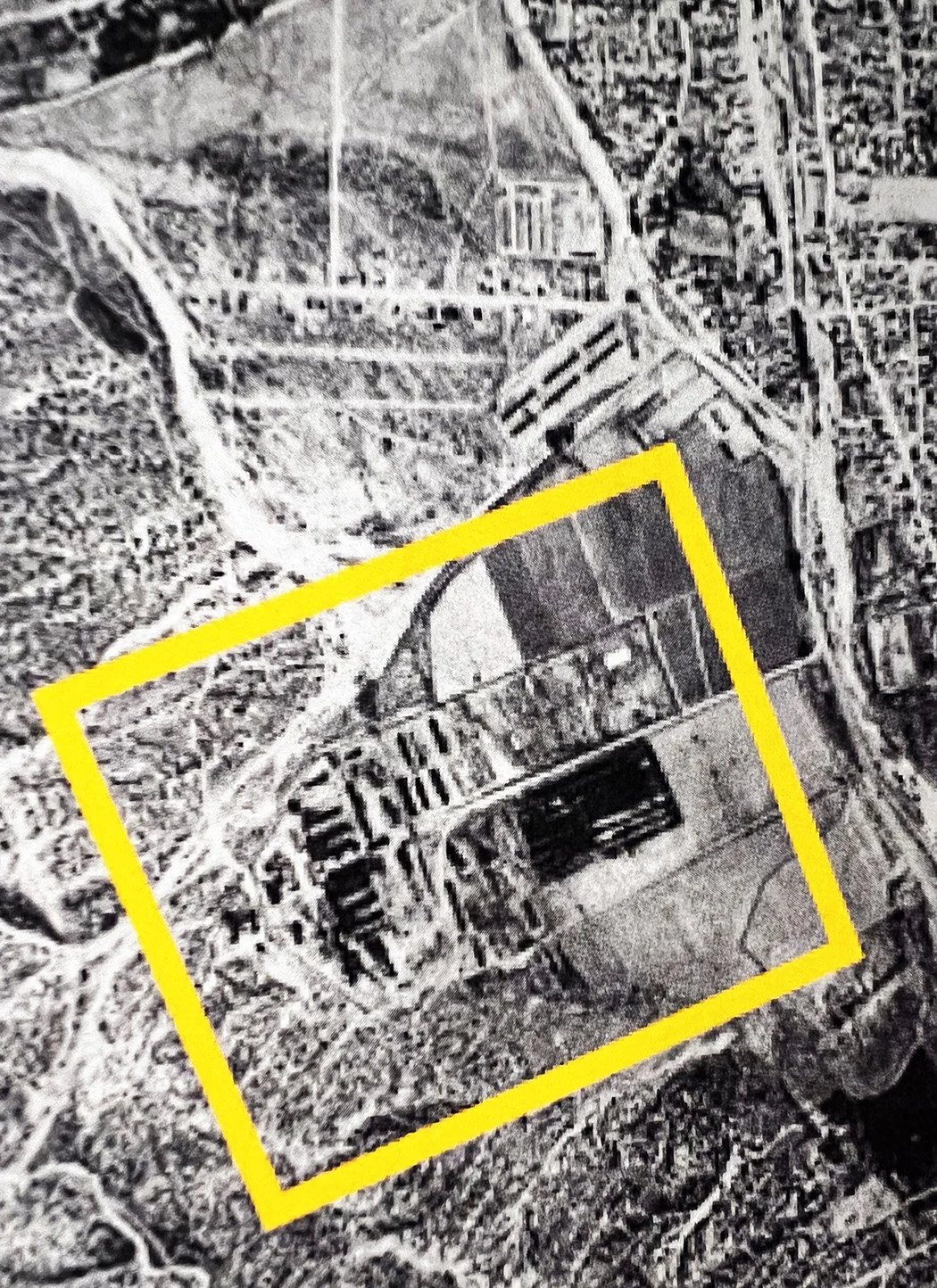MAPPING THE UNSEEN
An Interrogation of a Landscape
Mapping the Unseen was a temporary, site-specific installation completed in 2023. It was installed at the site of the former Japanese prison camp that was located in Santa Fe, NM during the period of WWII. The installation probes the complex relationship between remembering and forgetting.
Conceived as “counter-monument” project, the work is comprised of eleven music stands with multiples of the same aerial image taken of the structures after it no longer functioned as a camp, but before the structures had been demolished. The positioning of image varies, suggesting a different perspective and giving the installation a sense of movement. Each stand presents the images in a booklet form printed on Kozo paper. Placed along the vantage point horizon, the works supplant the view of the houses and offer an image that becomes a focal point and supplant the view of the houses that now cover the location. Book lights were attached to the stands to illuminate each element at dusk simultaneously creating a meditative and ghostly presence.
The images demarcate the boundary of the camp within a bold yellow outline, the structures are blurred, barely discernible. The booklets were attached to the stands in an open position, allowing the pages to turn at the whims of the wind.
The stands were placed along the horizon indicated by a plaque on the large stone marker as the place to stand to the former site. One stands at a kind of precipice that overlooks a basin filled with modern houses nestled beneath a mountain range.
The viewer must imagine the site because the area is now covered by a private gated community of homes. The marker itself is discretely located within the boundaries of a popular dog park. The installation is, thus, intended to supplant the view of the newly erected houses with the aerial view of the site while the buildings were still intact.
The project speaks to the intangibility of loss and the equivocation related to historical events that threaten false narratives. This landscape is filled with contradictions that reflect conflicting narratives held among the population.
The site is simultaneously remembered and forgotten, essentially becoming a monument to remembering and forgetting.
The aerial view of the site of the prison camp was taken after the camp had been closed but before the structures had been demolished.






